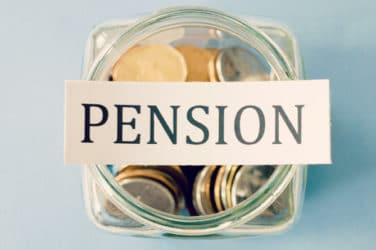
Actively managed exchange-trade funds will be the next logical step in Europe despite the failure of the first ETF following an actively managed index in the region according to Detlef Glow, head of research for Europe, Middle East and Africa at Lipper, the fund researcher.
Smart beta ETFs, which do not follow a standard market-cap-weighted index but instead follow indexes based on factors, such as momentum, quality, size, and value, have become more popular. However, investors have raised concerns that smart beta ETFs show longer periods of underperformance that make it necessary to switch between factors at the right time according to Glow in his latest Monday Morning Memo.
“The popularity of these products led to a race in the search for new factors that can be exploited by investors, since the index and ETF promoters wanted to offer new products to their clients,” added Glow. “But the “new factors” found by the researchers were mainly market abnormalities that disappeared shortly after they were found, or the additional returns were too small to exploit in a profitable way, since transaction costs were eating away the premium.”
The industry is now trying to develop smart beta products that combine different factors so investors do not have to worry about timing but can construct a portfolio that is either in different factors at the same time or that tries to switch between factors at the right time.
Glow said: “From these semi-actively managed portfolios it is only a small step to a fully active managed portfolio wrapped in an ETF structure. Even though some market observers would label this a scandal, the introduction of actively managed ETFs will be the next logical step for the industry.”
He added that although the first ETF following an actively managed index in Europe was not a success, US fund manager Pimco has been able to generate high inflows after launching its first actively managed ETF in the US and other active managers have followed suit.
“From my point of view this makes a lot of sense, since the ETF wrapper is a very efficient structure that opens up new distribution methods for active managers,” said Glow. “But to be successful active ETF managers must not only have good products, they also must build the right infrastructure for trading their funds.”
He noted there are a number of active managed funds listed on Germany’s Deutsche Börse but it is still not common to buy or sell a mutual fund on an exchange.
“From my point of view the trading of actively managed ETFs will become a very common way to buy mutual funds for all kinds of investors, once fund promoters officially start to use this market as a distribution channel,” Glow added. ”It is not a question of if we will see actively managed funds traded as ETFs, it is only a question of when we will see this happen.”
On a panel at the Thomson Reuters Lipper Alpha Forum in London last month Hector McNeil, co-chief executive of WisdomTree Europe, the ETF issuer, said all asset managers, including active managers, need to have an ETF strategy.
Bernhard Langer, chief investment officer of Invesco Quantitative Strategies, said on the panel that passive funds make sense in certain asset allocations. He predicted that smart beta products will develop to include single factor products, style and macro funds and a combination of both.
The BlackRock Global ETP Landscape for April said global smart beta exchange-traded products had net inflows of $7.2bn (€6.3bn) last month, just below the record set in March.
Global ETF flows of $11.1bn in April eased from the robust March levels according to BlackRock but flows continued into emerging markets and investment grade corporate bonds. Emerging market equity flows of $3.1bn in April contributed to the best two-month total in over three years.
Flows into fixed income ETFs listed in Europe reached $3.9bn in April after a record March, concentrated in corporate bonds and emerging market debt. “Over the past two months, fixed income flows of $10.7bn into Europe-listed funds nearly exceeded those for US-listed funds,” added BlackRock. “During January and February, US-listed funds captured over 80% of flows.”
Global assets in ETFs reached a new record of $3.1 trillion at the end of April after 27 consecutive months of net inflows, according to preliminary data from consultancy ETFGI’s April 2016 global ETF and ETP industry insights report. ETF assets in Europe reached $533.3bn.
Deborah Fuhr, managing partner at ETFGI, said in a statement: “There is still a significant amount of uncertainty in the markets due to the upcoming Brexit vote, the US election, the efficacy and future of quantitative easing programs around the world.”
Last month BlackRock’s iShares gathered the largest net ETF inflows of $6.01bn, followed by Vanguard with $5.98bn and ProShares with $1.18bn according to ETFGI.






